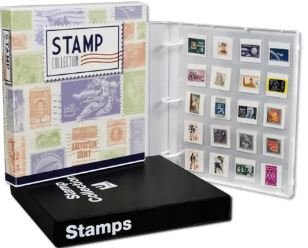Stamp collecting has long been a cherished hobby for many, and over the years, stamp auctions have become a key component of this passionate pursuit. Whether you’re a seasoned philatelist or a newcomer just beginning to explore the world of stamp collecting, navigating stamp auctions can be both exciting and intimidating. As the saying goes, “You have to spend money to make money,” but in the world of stamp auctions, it’s not always so simple. This brings us to a question that has been on the minds of collectors for decades: Is navigating stamp auctions a collector’s dream or a risky gamble?

The Allure of Stamp Auctions
For many collectors, stamp auctions offer an unparalleled opportunity to acquire rare and valuable pieces that might otherwise be out of reach. The thrill of bidding on unique stamps and outmaneuvering other collectors to secure a prized lot is a major draw for enthusiasts. Some of the most famous stamps in the world have been sold through auctions, including the famous British Guiana 1c magenta, which fetched a staggering price of $9.5 million at an auction in 2014.
Navigating stamp auctions can be a dream come true for those who have a deep understanding of philately and the market. Auctions provide access to rare stamps, limited editions, and even collections that might never be offered through traditional retail channels. In this sense, stamp auctions are an essential part of the philatelic world.
However, with the potential rewards come significant risks. Let’s dive into both sides of the coin to explore whether navigating stamp auctions is a collector’s dream or a risky gamble.
The Collector’s Dream: Why Stamp Auctions Can Be a Treasure Trove
One of the main reasons navigating stamp auctions is considered a collector’s dream is the sheer variety and availability of stamps. Auctions regularly feature collections that have been carefully curated over decades, offering buyers access to items that are simply not available through any other avenue. For example:
- Rare and Unique Items: Some stamps are so rare that they only appear at auction, such as misprints, limited-edition releases, or historical pieces that have significant value. These one-of-a-kind items are often sold to the highest bidder, creating opportunities for collectors to acquire pieces they might never find elsewhere.
- Competitive Pricing: Stamp auctions sometimes offer pieces at lower-than-market prices, especially in cases where demand is not as high as anticipated. For savvy collectors who are knowledgeable about pricing trends, navigating stamp auctions can result in securing a valuable stamp at a great deal.
- Global Access: Online stamp auctions have made it easier than ever to participate in auctions from around the world. A collector in New York can bid on a stamp from the 19th century that originates in New Zealand or Great Britain, expanding the scope of their collection exponentially.
- Heritage and Provenance: Some auction houses specialize in offering stamps with a clear provenance, which adds significant value. The history behind a stamp can turn an ordinary item into an extraordinary find, and navigating stamp auctions gives collectors a chance to own pieces with fascinating stories.

The Risky Gamble: Pitfalls of Navigating Stamp Auctions
While the opportunities at stamp auctions are appealing, they come with their share of risks. Navigating stamp auctions requires careful consideration, knowledge, and often a considerable amount of luck. Some of the risks include:
- Overpaying: In the heat of bidding, it’s easy to get carried away and bid more than a stamp is worth. Auction fever can lead collectors to spend more than they initially planned, which could result in financial losses if the stamp does not hold its value over time.
- Condition and Authenticity: Stamps are fragile, and their condition plays a major role in their value. Auction lots are not always accurately described, and a stamp that appears pristine in photographs might have hidden flaws. Furthermore, counterfeit stamps or misrepresented lots can make their way into auctions, and without proper expertise, buyers can be left with a worthless item.
- Hidden Fees: Stamp auctions, especially those held by prestigious houses, often come with additional costs beyond the hammer price. Buyer’s premiums, shipping, and insurance fees can add up quickly, turning what initially seemed like a bargain into a more expensive proposition.
- Market Volatility: The market for stamps can be unpredictable. A stamp that seems to be worth a fortune today might not have the same value tomorrow. Economic downturns, changes in collector trends, or shifts in demand can cause stamp prices to fluctuate dramatically, making it difficult to predict the future value of an item purchased at auction.
- Emotional Bidding: For passionate collectors, emotions can play a significant role when bidding in stamp auctions. What starts as a calculated purchase can quickly turn into an emotional investment. Navigating stamp auctions requires a cool head and a strategic approach to ensure that bidding remains within reasonable limits.
How to Minimize Risk When Navigating Stamp Auctions
Despite the risks, navigating stamp auctions can be a rewarding experience with the right strategies in place. Here are some tips to help you make informed decisions and reduce the likelihood of a costly mistake:
- Research Before You Bid: Knowledge is power in the world of stamp auctions. Before bidding, research the stamp’s value, condition, and provenance. Consulting with experts or seeking advice from experienced collectors can help you avoid overpaying or falling for fraudulent lots.
- Set a Budget: It’s easy to get caught up in the excitement of an auction, but setting a firm budget beforehand will help you avoid making impulsive decisions. Stick to your limit and remember that there will always be another auction with new opportunities.
- Understand the Auction House: Reputable auction houses are more likely to provide accurate descriptions and vet their lots thoroughly. Look for established auctioneers with a strong reputation in the philatelic community. Trusting a well-known auction house can offer peace of mind when navigating stamp auctions.
- Pay Attention to Fees: Always be aware of any additional costs that come with the purchase. Auction houses typically charge a buyer’s premium, which can range from 5% to 20%. Be sure to factor these fees into your overall budget to avoid unpleasant surprises.
- Don’t Rush the Process: Take your time to carefully evaluate each lot. Don’t be swayed by a sense of urgency or a competitive bidder trying to push the price up. Sometimes, the best decisions are those made with patience and consideration.

The Role of Stamps in World War II was far more significant than many might initially think. During the global conflict, stamps became powerful symbols and tools, influencing public sentiment, boosting national morale, and even serving as instruments of wartime propaganda
Conclusion: A Collector’s Dream or a Risky Gamble?
Navigating stamp auctions is both a dream and a gamble, depending on your experience, knowledge, and approach. For those who are well-versed in philately and understand the dynamics of the auction world, it can be an exhilarating way to acquire rare and valuable pieces. On the other hand, without proper preparation, stamp auctions can quickly turn into a risky gamble, with the potential for significant financial loss.
Ultimately, whether navigating stamp auctions is a collector’s dream or a risky gamble comes down to how well you prepare, how much you know about the market, and how effectively you manage the risks. If you approach the process with caution, research, and strategy, you’ll increase your chances of making stamp auctions a rewarding and profitable experience.




